Machine Learning & Data Science with Python, Kaggle & Pandas
Oak Academy,Ali̇ CAVDAR,OAK Academy Team
29:13:15
Description
Machine Learning A-Z course from zero with Python, Kaggle, Pandas and Numpy for data analysis with hands-on examples
What You'll Learn?
- Machine learning isn’t just useful for predictive texting or smartphone voice recognition. Machine learning is constantly being applied to new industries.
- Learn Machine Learning with Hands-On Examples
- What is Machine Learning?
- Machine Learning Terminology
- Evaluation Metrics
- What are Classification vs Regression?
- Evaluating Performance-Classification Error Metrics
- Evaluating Performance-Regression Error Metrics
- Supervised Learning
- Cross Validation and Bias Variance Trade-Off
- Use matplotlib and seaborn for data visualizations
- Machine Learning with SciKit Learn
- Linear Regression Algorithm
- Logistic Regresion Algorithm
- K Nearest Neighbors Algorithm
- Decision Trees And Random Forest Algorithm
- Support Vector Machine Algorithm
- Unsupervised Learning
- K Means Clustering Algorithm
- Hierarchical Clustering Algorithm
- Principal Component Analysis (PCA)
- Recommender System Algorithm
- Python instructors on OAK Academy specialize in everything from software development to data analysis, and are known for their effective.
- Python is a general-purpose, object-oriented, high-level programming language.
- Python is a multi-paradigm language, which means that it supports many programming approaches. Along with procedural and functional programming styles
- Python is a widely used, general-purpose programming language, but it has some limitations. Because Python is an interpreted, dynamically typed language
- Python is a general programming language used widely across many industries and platforms. One common use of Python is scripting, which means automating tasks.
- Python is a popular language that is used across many industries and in many programming disciplines. DevOps engineers use Python to script website.
- Python has a simple syntax that makes it an excellent programming language for a beginner to learn. To learn Python on your own, you first must become familiar
- Machine learning describes systems that make predictions using a model trained on real-world data.
- Machine learning is being applied to virtually every field today. That includes medical diagnoses, facial recognition, weather forecasts, image processing.
- It's possible to use machine learning without coding, but building new systems generally requires code.
- Python is the most used language in machine learning. Engineers writing machine learning systems often use Jupyter Notebooks and Python together.
- Machine learning is generally divided between supervised machine learning and unsupervised machine learning. In supervised machine learning.
- Machine learning is one of the fastest-growing and popular computer science careers today. Constantly growing and evolving.
- Machine learning is a smaller subset of the broader spectrum of artificial intelligence. While artificial intelligence describes any "intelligent machine"
- A machine learning engineer will need to be an extremely competent programmer with in-depth knowledge of computer science, mathematics, data science.
- Python machine learning, complete machine learning, machine learning a-z
Who is this for?
What You Need to Know?
More details
DescriptionHello there,
Welcome to the " Machine Learning & Data Science with Python, Kaggle & Pandas " Course
Machine Learning A-Z course from zero with Python, Kaggle, Pandas and Numpy for data analysis with hands-on examples
Machine learning is a branch of artificial intelligence (AI) and computer science which focuses on the use of data and algorithms to imitate the way that humans learn, gradually improving its accuracy.
You can develop the foundational skills you need to advance to building neural networks and creating more complex functions through the Python and R programming languages. Machine learning helps you stay ahead of new trends, technologies, and applications in this field.
Machine learning is being applied to virtually every field today. That includes medical diagnoses, facial recognition, weather forecasts, image processing, and more. In any situation in which pattern recognition, prediction, and analysis are critical, machine learning can be of use. Machine learning is often a disruptive technology when applied to new industries and niches. Machine learning engineers can find new ways to apply machine learning technology to optimize and automate existing processes. With the right data, you can use machine learning technology to identify extremely complex patterns and yield highly accurate predictions.
It’s hard to imagine our lives without machine learning. Predictive texting, email filtering, and virtual personal assistants like Amazon’s Alexa and the iPhone’s Siri, are all technologies that function based on machine learning algorithms and mathematical models. Python, machine learning, django, python programming, machine learning python, python for beginners, data science. Kaggle, statistics, r, python data science, deep learning, python programming, django, machine learning a-z, data scientist, python for data science
Pandas is an open source Python package that is most widely used for data science/data analysis and machine learning tasks. Pandas is built on top of another package named Numpy, which provides support for multi-dimensional arrays.
Pandas is mainly used for data analysis and associated manipulation of tabular data in DataFrames. Pandas allows importing data from various file formats such as comma-separated values, JSON, Parquet, SQL database tables or queries, and Microsoft Excel. data analysis, pandas, numpy, numpy stack, numpy python, python data analysis, python, Python numpy, data visualization, pandas python, python pandas, python for data analysis, python data, data visualization.
Pandas is a fast, powerful, flexible and easy to use open source data analysis and manipulation tool, built on top of the Python programming language.
Python instructors on OAK Academy specialize in everything from software development to data analysis, and are known for their effective, friendly instruction for students of all levels.
Numpy is a library for the Python programming language, adding support for large, multi-dimensional arrays and matrices, along with a large collection of high-level mathematical functions to operate on these arrays. Moreover, Numpy forms the foundation of the Machine Learning stack.
Whether you work in machine learning or finance, or are pursuing a career in web development or data science, Python is one of the most important skills you can learn. Python's simple syntax is especially suited for desktop, web, and business applications. Python's design philosophy emphasizes readability and usability. Python was developed upon the premise that there should be only one way (and preferably one obvious way) to do things, a philosophy that has resulted in a strict level of code standardization. The core programming language is quite small and the standard library is also large. In fact, Python's large library is one of its greatest benefits, providing a variety of different tools for programmers suited for many different tasks.
Do you know data science needs will create 11.5 million job openings by 2026?
Do you know the average salary is $100.000 for data science careers!
Data Science Careers Are Shaping The Future
Data science experts are needed in almost every field, from government security to dating apps. Millions of businesses and government departments rely on big data to succeed and better serve their customers. So data science careers are in high demand.
If you want to learn one of the employer’s most request skills?
If you are curious about Data Science and looking to start your self-learning journey into the world of data with Python?
If you are an experienced developer and looking for a landing in Data Science!
In all cases, you are at the right place!
We've designed for you “Machine Learning & Data Science with Python & Kaggle | A-Z†a straightforward course for Python Programming Language and Machine Learning.
In the course, you will have down-to-earth way explanations with projects. With this course, you will learn machine learning step-by-step. I made it simple and easy with exercises, challenges, and lots of real-life examples.
Also you will get to know the Kaggle platform step by step with hearth attack prediction kaggle project.
Kaggle, a subsidiary of Google LLC, is an online community of data scientists and machine learning practitioners. Kaggle allows users to find and publish data sets, explore and build models in a web-based data-science environment, work with other data scientists and machine learning engineers, and enter competitions to solve data science challenges.
Kaggle offers a no-setup, customizable, Jupyter Notebooks environment. Access free GPUs and a huge repository of community-published data & code.
Kaggle is a platform where data scientists can compete in machine learning challenges. These challenges can be anything from predicting housing prices to detecting cancer cells. Kaggle has a massive community of data scientists who are always willing to help others with their data science problems.
You will learn the Numpy and Pandas Python Programming Language libraries step by step.
Throughout the course, we will teach you how to use Python to analyze data, create beautiful visualizations, and use powerful machine learning python algorithms.
This Machine Learning course is for everyone!
If you don’t have any previous experience, not a problem! This course is expertly designed to teach everyone from complete beginners, right through to professionals ( as a refresher).
What is machine learning?
Machine learning describes systems that make predictions using a model trained on real-world data. For example, let's say we want to build a system that can identify if a cat is in a picture. We first assemble many pictures to train our machine learning model. During this training phase, we feed pictures into the model, along with information around whether they contain a cat. While training, the model learns patterns in the images that are the most closely associated with cats. This model can then use the patterns learned during training to predict whether the new images that it's fed contain a cat. In this particular example, we might use a neural network to learn these patterns, but machine learning can be much simpler than that. Even fitting a line to a set of observed data points, and using that line to make new predictions, counts as a machine learning model.
Why we use a Python programming language in Machine learning?
Python is a general-purpose, high-level, and multi-purpose programming language. The best thing about Python is, it supports a lot of today’s technology including vast libraries for Twitter, data mining, scientific calculations, designing, back-end server for websites, engineering simulations, artificial learning, augmented reality and what not! Also, it supports all kinds of App development.
What is machine learning used for?
Machine learning a-z is being applied to virtually every field today. That includes medical diagnoses, facial recognition, weather forecasts, image processing, and more. In any situation in which pattern recognition, prediction, and analysis are critical, machine learning can be of use. Machine learning is often a disruptive technology when applied to new industries and niches. Machine learning engineers can find new ways to apply machine learning technology to optimize and automate existing processes. With the right data, you can use machine learning technology to identify extremely complex patterns and yield highly accurate predictions.
Does Machine learning require coding?
It's possible to use machine learning data science without coding, but building new systems generally requires code. For example, Amazon’s Rekognition service allows you to upload an image via a web browser, which then identifies objects in the image. This uses a pre-trained model, with no coding required. However, developing machine learning systems involves writing some Python code to train, tune, and deploy your models. It's hard to avoid writing code to pre-process the data feeding into your model. Most of the work done by a machine learning practitioner involves cleaning the data used to train the machine. They also perform “feature engineering†to find what data to use and how to prepare it for use in a machine learning model. Tools like AutoML and SageMaker automate the tuning of models. Often only a few lines of code can train a model and make predictions from it
What is the best language for machine learning?
Python is the most used language in machine learning using python. Engineers writing machine learning systems often use Jupyter Notebooks and Python together. Jupyter Notebooks is a web application that allows experimentation by creating and sharing documents that contain live code, equations, and more. Machine learning involves trial and error to see which hyperparameters and feature engineering choices work best. It's useful to have a development environment such as Python so that you don't need to compile and package code before running it each time. Python is not the only language choice for machine learning. Tensorflow is a popular framework for developing neural networks and offers a C++ API. There is a complete machine learning framework for C# called ML. NET. Scala or Java are sometimes used with Apache Spark to build machine learning systems that ingest massive data sets.
What is a Kaggle?
Kaggle, a subsidiary of Google LLC, is an online community of data scientists and machine learning practitioners.
How does Kaggle work?
Every competition on Kaggle has a dataset associated with it and a goal you must reach (i.e., predict housing prices or detect cancer cells). You can access the data as often as possible and build your prediction model. Still, once you submit your solution, you cannot use it to make future submissions.
This ensures that everyone is starting from the same point when competing against one another, so there are no advantages given to those with more computational power than others trying to solve the problem.
Competitions are separated into different categories depending on their complexity level, how long they take, whether or not prize money is involved, etc., so users with varying experience levels can compete against each other in the same arena.
What is a Pandas in Python?
Pandas is an open source Python package that is most widely used for data science/data analysis and machine learning tasks. It is built on top of another package named Numpy, which provides support for multi-dimensional arrays.
What is Pandas used for?
Pandas is mainly used for data analysis and associated manipulation of tabular data in DataFrames. Pandas allows importing data from various file formats such as comma-separated values, JSON, Parquet, SQL database tables or queries, and Microsoft Excel.
What is difference between NumPy and pandas?
NumPy library provides objects for multi-dimensional arrays, whereas Pandas is capable of offering an in-memory 2d table object called DataFrame. NumPy consumes less memory as compared to Pandas. Indexing of the Series objects is quite slow as compared to NumPy arrays.
What are the different types of machine learning?
Machine learning is generally divided between supervised machine learning and unsupervised machine learning. In supervised machine learning, we train machine learning models on labeled data. For example, an algorithm meant to detect spam might ingest thousands of email addresses labeled 'spam' or 'not spam.' That trained model could then identify new spam emails even from data it's never seen. In unsupervised learning, a machine learning model looks for patterns in unstructured data. One type of unsupervised learning is clustering. In this example, a model could identify similar movies by studying their scripts or cast, then group the movies together into genres. This unsupervised model was not trained to know which genre a movie belongs to. Rather, it learned the genres by studying the attributes of the movies themselves. There are many techniques available within.
Is Machine learning a good career?
Machine learning python is one of the fastest-growing and popular computer science careers today. Constantly growing and evolving, you can apply machine learning to a variety of industries, from shipping and fulfillment to medical sciences. Machine learning engineers work to create artificial intelligence that can better identify patterns and solve problems. The machine learning discipline frequently deals with cutting-edge, disruptive technologies. However, because it has become a popular career choice, it can also be competitive. Aspiring machine learning engineers can differentiate themselves from the competition through certifications, boot camps, code repository submissions, and hands-on experience.
What is the difference between machine learning and artifical intelligence?
Machine learning is a smaller subset of the broader spectrum of artificial intelligence. While artificial intelligence describes any "intelligent machine" that can derive information and make decisions, machine learning describes a method by which it can do so. Through machine learning, applications can derive knowledge without the user explicitly giving out the information. This is one of the first and early steps toward "true artificial intelligence" and is extremely useful for numerous practical applications. In machine learning applications, an AI is fed sets of information. It learns from these sets of information about what to expect and what to predict. But it still has limitations. A machine learning engineer must ensure that the AI is fed the right information and can use its logic to analyze that information correctly.
What skills should a machine learning engineer know?
A python machine learning engineer will need to be an extremely competent programmer with in-depth knowledge of computer science, mathematics, data science, and artificial intelligence theory. Machine learning engineers must be able to dig deep into complex applications and their programming. As with other disciplines, there are entry-level machine learning engineers and machine learning engineers with high-level expertise. Python and R are two of the most popular languages within the machine learning field.
What is data science?
We have more data than ever before. But data alone cannot tell us much about the world around us. We need to interpret the information and discover hidden patterns. This is where data science comes in. Data science uses algorithms to understand raw data. The main difference between data science and traditional data analysis is its focus on prediction. Data science seeks to find patterns in data and use those patterns to predict future data. It draws on machine learning to process large amounts of data, discover patterns, and predict trends. Data science includes preparing, analyzing, and processing data. It draws from many scientific fields, and as a science, it progresses by creating new algorithms to analyze data and validate current methods.
Why would you want to take this course?
Our answer is simple: The quality of teaching.
OAK Academy based in London is an online education company. OAK Academy gives education in the field of IT, Software, Design, development in English, Portuguese, Spanish, Turkish, and a lot of different languages on the Udemy platform where it has over 1000 hours of video education lessons. OAK Academy both increases its education series number by publishing new courses, and it makes students aware of all the innovations of already published courses by upgrading.
When you enroll, you will feel the OAK Academy`s seasoned developers' expertise. Questions sent by students to our instructors are answered by our instructors within 48 hours at the latest.
Video and Audio Production Quality
All our videos are created/produced as high-quality video and audio to provide you the best learning experience.
You will be,
Seeing clearly
Hearing clearly
Moving through the course without distractions
You'll also get:
Lifetime Access to The Course
Fast & Friendly Support in the Q&A section
Udemy Certificate of Completion Ready for Download
We offer full support, answering any questions.
If you are ready to learn Dive in now into the " Machine Learning & Data Science with Python, Kaggle & Pandas " Course
Machine Learning A-Z course from zero with Python, Kaggle, Pandas and Numpy for data analysis with hands-on examples
See you in the course!
Who this course is for:
- Anyone who wants to start learning "Machine Learning"
- Anyone who needs a complete guide on how to start and continue their career with machine learning
- Students Interested in Beginning Data Science Applications in Python Environment
- People Wanting to Specialize in Anaconda Python Environment for Data Science and Scientific Computing
- Students Wanting to Learn the Application of Supervised Learning (Classification) on Real Data Using Python
- Anyone eager to learn python for data science and machine learning bootcamp with no coding background
- Anyone who plans a career in data scientist,
- Software developer whom want to learn python,
- Anyone interested in machine learning a-z
- People who want to become data scientist
- Poeple who want tp learn complete machine learning
Hello there,
Welcome to the " Machine Learning & Data Science with Python, Kaggle & Pandas " Course
Machine Learning A-Z course from zero with Python, Kaggle, Pandas and Numpy for data analysis with hands-on examples
Machine learning is a branch of artificial intelligence (AI) and computer science which focuses on the use of data and algorithms to imitate the way that humans learn, gradually improving its accuracy.
You can develop the foundational skills you need to advance to building neural networks and creating more complex functions through the Python and R programming languages. Machine learning helps you stay ahead of new trends, technologies, and applications in this field.
Machine learning is being applied to virtually every field today. That includes medical diagnoses, facial recognition, weather forecasts, image processing, and more. In any situation in which pattern recognition, prediction, and analysis are critical, machine learning can be of use. Machine learning is often a disruptive technology when applied to new industries and niches. Machine learning engineers can find new ways to apply machine learning technology to optimize and automate existing processes. With the right data, you can use machine learning technology to identify extremely complex patterns and yield highly accurate predictions.
It’s hard to imagine our lives without machine learning. Predictive texting, email filtering, and virtual personal assistants like Amazon’s Alexa and the iPhone’s Siri, are all technologies that function based on machine learning algorithms and mathematical models. Python, machine learning, django, python programming, machine learning python, python for beginners, data science. Kaggle, statistics, r, python data science, deep learning, python programming, django, machine learning a-z, data scientist, python for data science
Pandas is an open source Python package that is most widely used for data science/data analysis and machine learning tasks. Pandas is built on top of another package named Numpy, which provides support for multi-dimensional arrays.
Pandas is mainly used for data analysis and associated manipulation of tabular data in DataFrames. Pandas allows importing data from various file formats such as comma-separated values, JSON, Parquet, SQL database tables or queries, and Microsoft Excel. data analysis, pandas, numpy, numpy stack, numpy python, python data analysis, python, Python numpy, data visualization, pandas python, python pandas, python for data analysis, python data, data visualization.
Pandas is a fast, powerful, flexible and easy to use open source data analysis and manipulation tool, built on top of the Python programming language.
Python instructors on OAK Academy specialize in everything from software development to data analysis, and are known for their effective, friendly instruction for students of all levels.
Numpy is a library for the Python programming language, adding support for large, multi-dimensional arrays and matrices, along with a large collection of high-level mathematical functions to operate on these arrays. Moreover, Numpy forms the foundation of the Machine Learning stack.
Whether you work in machine learning or finance, or are pursuing a career in web development or data science, Python is one of the most important skills you can learn. Python's simple syntax is especially suited for desktop, web, and business applications. Python's design philosophy emphasizes readability and usability. Python was developed upon the premise that there should be only one way (and preferably one obvious way) to do things, a philosophy that has resulted in a strict level of code standardization. The core programming language is quite small and the standard library is also large. In fact, Python's large library is one of its greatest benefits, providing a variety of different tools for programmers suited for many different tasks.
Do you know data science needs will create 11.5 million job openings by 2026?
Do you know the average salary is $100.000 for data science careers!
Data Science Careers Are Shaping The Future
Data science experts are needed in almost every field, from government security to dating apps. Millions of businesses and government departments rely on big data to succeed and better serve their customers. So data science careers are in high demand.
If you want to learn one of the employer’s most request skills?
If you are curious about Data Science and looking to start your self-learning journey into the world of data with Python?
If you are an experienced developer and looking for a landing in Data Science!
In all cases, you are at the right place!
We've designed for you “Machine Learning & Data Science with Python & Kaggle | A-Z†a straightforward course for Python Programming Language and Machine Learning.
In the course, you will have down-to-earth way explanations with projects. With this course, you will learn machine learning step-by-step. I made it simple and easy with exercises, challenges, and lots of real-life examples.
Also you will get to know the Kaggle platform step by step with hearth attack prediction kaggle project.
Kaggle, a subsidiary of Google LLC, is an online community of data scientists and machine learning practitioners. Kaggle allows users to find and publish data sets, explore and build models in a web-based data-science environment, work with other data scientists and machine learning engineers, and enter competitions to solve data science challenges.
Kaggle offers a no-setup, customizable, Jupyter Notebooks environment. Access free GPUs and a huge repository of community-published data & code.
Kaggle is a platform where data scientists can compete in machine learning challenges. These challenges can be anything from predicting housing prices to detecting cancer cells. Kaggle has a massive community of data scientists who are always willing to help others with their data science problems.
You will learn the Numpy and Pandas Python Programming Language libraries step by step.
Throughout the course, we will teach you how to use Python to analyze data, create beautiful visualizations, and use powerful machine learning python algorithms.
This Machine Learning course is for everyone!
If you don’t have any previous experience, not a problem! This course is expertly designed to teach everyone from complete beginners, right through to professionals ( as a refresher).
What is machine learning?
Machine learning describes systems that make predictions using a model trained on real-world data. For example, let's say we want to build a system that can identify if a cat is in a picture. We first assemble many pictures to train our machine learning model. During this training phase, we feed pictures into the model, along with information around whether they contain a cat. While training, the model learns patterns in the images that are the most closely associated with cats. This model can then use the patterns learned during training to predict whether the new images that it's fed contain a cat. In this particular example, we might use a neural network to learn these patterns, but machine learning can be much simpler than that. Even fitting a line to a set of observed data points, and using that line to make new predictions, counts as a machine learning model.
Why we use a Python programming language in Machine learning?
Python is a general-purpose, high-level, and multi-purpose programming language. The best thing about Python is, it supports a lot of today’s technology including vast libraries for Twitter, data mining, scientific calculations, designing, back-end server for websites, engineering simulations, artificial learning, augmented reality and what not! Also, it supports all kinds of App development.
What is machine learning used for?
Machine learning a-z is being applied to virtually every field today. That includes medical diagnoses, facial recognition, weather forecasts, image processing, and more. In any situation in which pattern recognition, prediction, and analysis are critical, machine learning can be of use. Machine learning is often a disruptive technology when applied to new industries and niches. Machine learning engineers can find new ways to apply machine learning technology to optimize and automate existing processes. With the right data, you can use machine learning technology to identify extremely complex patterns and yield highly accurate predictions.
Does Machine learning require coding?
It's possible to use machine learning data science without coding, but building new systems generally requires code. For example, Amazon’s Rekognition service allows you to upload an image via a web browser, which then identifies objects in the image. This uses a pre-trained model, with no coding required. However, developing machine learning systems involves writing some Python code to train, tune, and deploy your models. It's hard to avoid writing code to pre-process the data feeding into your model. Most of the work done by a machine learning practitioner involves cleaning the data used to train the machine. They also perform “feature engineering†to find what data to use and how to prepare it for use in a machine learning model. Tools like AutoML and SageMaker automate the tuning of models. Often only a few lines of code can train a model and make predictions from it
What is the best language for machine learning?
Python is the most used language in machine learning using python. Engineers writing machine learning systems often use Jupyter Notebooks and Python together. Jupyter Notebooks is a web application that allows experimentation by creating and sharing documents that contain live code, equations, and more. Machine learning involves trial and error to see which hyperparameters and feature engineering choices work best. It's useful to have a development environment such as Python so that you don't need to compile and package code before running it each time. Python is not the only language choice for machine learning. Tensorflow is a popular framework for developing neural networks and offers a C++ API. There is a complete machine learning framework for C# called ML. NET. Scala or Java are sometimes used with Apache Spark to build machine learning systems that ingest massive data sets.
What is a Kaggle?
Kaggle, a subsidiary of Google LLC, is an online community of data scientists and machine learning practitioners.
How does Kaggle work?
Every competition on Kaggle has a dataset associated with it and a goal you must reach (i.e., predict housing prices or detect cancer cells). You can access the data as often as possible and build your prediction model. Still, once you submit your solution, you cannot use it to make future submissions.
This ensures that everyone is starting from the same point when competing against one another, so there are no advantages given to those with more computational power than others trying to solve the problem.
Competitions are separated into different categories depending on their complexity level, how long they take, whether or not prize money is involved, etc., so users with varying experience levels can compete against each other in the same arena.
What is a Pandas in Python?
Pandas is an open source Python package that is most widely used for data science/data analysis and machine learning tasks. It is built on top of another package named Numpy, which provides support for multi-dimensional arrays.
What is Pandas used for?
Pandas is mainly used for data analysis and associated manipulation of tabular data in DataFrames. Pandas allows importing data from various file formats such as comma-separated values, JSON, Parquet, SQL database tables or queries, and Microsoft Excel.
What is difference between NumPy and pandas?
NumPy library provides objects for multi-dimensional arrays, whereas Pandas is capable of offering an in-memory 2d table object called DataFrame. NumPy consumes less memory as compared to Pandas. Indexing of the Series objects is quite slow as compared to NumPy arrays.
What are the different types of machine learning?
Machine learning is generally divided between supervised machine learning and unsupervised machine learning. In supervised machine learning, we train machine learning models on labeled data. For example, an algorithm meant to detect spam might ingest thousands of email addresses labeled 'spam' or 'not spam.' That trained model could then identify new spam emails even from data it's never seen. In unsupervised learning, a machine learning model looks for patterns in unstructured data. One type of unsupervised learning is clustering. In this example, a model could identify similar movies by studying their scripts or cast, then group the movies together into genres. This unsupervised model was not trained to know which genre a movie belongs to. Rather, it learned the genres by studying the attributes of the movies themselves. There are many techniques available within.
Is Machine learning a good career?
Machine learning python is one of the fastest-growing and popular computer science careers today. Constantly growing and evolving, you can apply machine learning to a variety of industries, from shipping and fulfillment to medical sciences. Machine learning engineers work to create artificial intelligence that can better identify patterns and solve problems. The machine learning discipline frequently deals with cutting-edge, disruptive technologies. However, because it has become a popular career choice, it can also be competitive. Aspiring machine learning engineers can differentiate themselves from the competition through certifications, boot camps, code repository submissions, and hands-on experience.
What is the difference between machine learning and artifical intelligence?
Machine learning is a smaller subset of the broader spectrum of artificial intelligence. While artificial intelligence describes any "intelligent machine" that can derive information and make decisions, machine learning describes a method by which it can do so. Through machine learning, applications can derive knowledge without the user explicitly giving out the information. This is one of the first and early steps toward "true artificial intelligence" and is extremely useful for numerous practical applications. In machine learning applications, an AI is fed sets of information. It learns from these sets of information about what to expect and what to predict. But it still has limitations. A machine learning engineer must ensure that the AI is fed the right information and can use its logic to analyze that information correctly.
What skills should a machine learning engineer know?
A python machine learning engineer will need to be an extremely competent programmer with in-depth knowledge of computer science, mathematics, data science, and artificial intelligence theory. Machine learning engineers must be able to dig deep into complex applications and their programming. As with other disciplines, there are entry-level machine learning engineers and machine learning engineers with high-level expertise. Python and R are two of the most popular languages within the machine learning field.
What is data science?
We have more data than ever before. But data alone cannot tell us much about the world around us. We need to interpret the information and discover hidden patterns. This is where data science comes in. Data science uses algorithms to understand raw data. The main difference between data science and traditional data analysis is its focus on prediction. Data science seeks to find patterns in data and use those patterns to predict future data. It draws on machine learning to process large amounts of data, discover patterns, and predict trends. Data science includes preparing, analyzing, and processing data. It draws from many scientific fields, and as a science, it progresses by creating new algorithms to analyze data and validate current methods.
Why would you want to take this course?
Our answer is simple: The quality of teaching.
OAK Academy based in London is an online education company. OAK Academy gives education in the field of IT, Software, Design, development in English, Portuguese, Spanish, Turkish, and a lot of different languages on the Udemy platform where it has over 1000 hours of video education lessons. OAK Academy both increases its education series number by publishing new courses, and it makes students aware of all the innovations of already published courses by upgrading.
When you enroll, you will feel the OAK Academy`s seasoned developers' expertise. Questions sent by students to our instructors are answered by our instructors within 48 hours at the latest.
Video and Audio Production Quality
All our videos are created/produced as high-quality video and audio to provide you the best learning experience.
You will be,
Seeing clearly
Hearing clearly
Moving through the course without distractions
You'll also get:
Lifetime Access to The Course
Fast & Friendly Support in the Q&A section
Udemy Certificate of Completion Ready for Download
We offer full support, answering any questions.
If you are ready to learn Dive in now into the " Machine Learning & Data Science with Python, Kaggle & Pandas " Course
Machine Learning A-Z course from zero with Python, Kaggle, Pandas and Numpy for data analysis with hands-on examples
See you in the course!
Who this course is for:
- Anyone who wants to start learning "Machine Learning"
- Anyone who needs a complete guide on how to start and continue their career with machine learning
- Students Interested in Beginning Data Science Applications in Python Environment
- People Wanting to Specialize in Anaconda Python Environment for Data Science and Scientific Computing
- Students Wanting to Learn the Application of Supervised Learning (Classification) on Real Data Using Python
- Anyone eager to learn python for data science and machine learning bootcamp with no coding background
- Anyone who plans a career in data scientist,
- Software developer whom want to learn python,
- Anyone interested in machine learning a-z
- People who want to become data scientist
- Poeple who want tp learn complete machine learning
User Reviews
Rating
Oak Academy
Instructor's CoursesAli̇ CAVDAR
Instructor's CoursesOAK Academy Team
Instructor's Courses
Udemy
View courses Udemy- language english
- Training sessions 206
- duration 29:13:15
- Release Date 2023/06/12





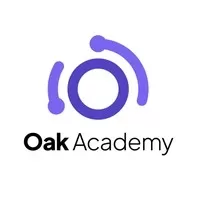




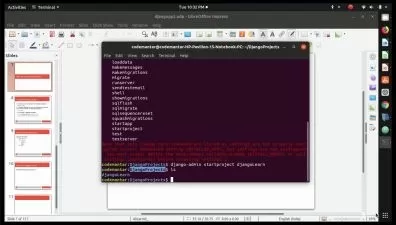
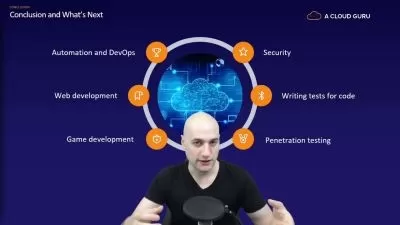
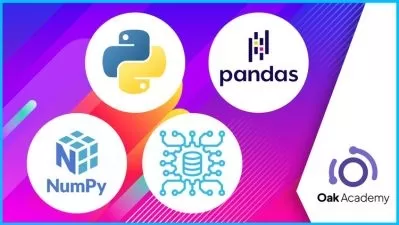






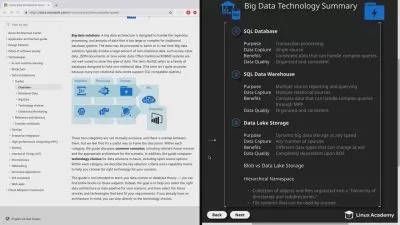


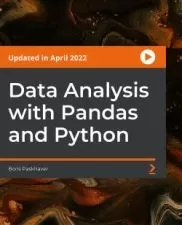
![Master Pandas for Data Handling [2024]](https://traininghub.ir/image/course_pic/37313-x225.webp)

